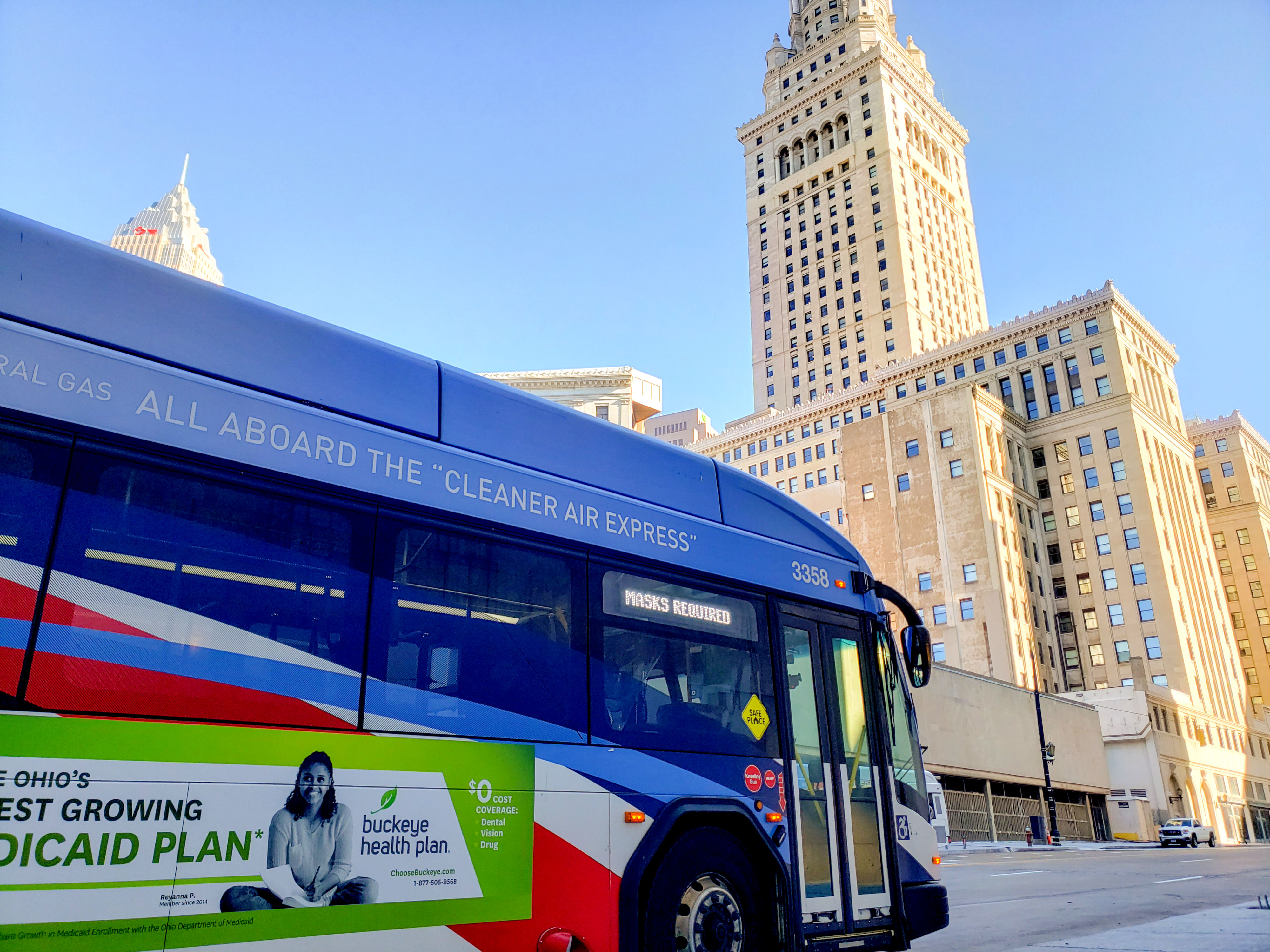Contact
- For municipal roadway project review, please contact:
Brian Temming
btemming@gcrta.org
1-216-3563-270 - For development review, please contact:
Jeffrey Macko
jmacko@gcrta.org
1-216-356-3048 - For enhancements to local bus stops, please contact:
Nicholas Miller
nicholas.miller@gcrta.org
1-216-356-3259
View Transit Street and Bus Stop Design Guidelines Document
Purpose
GCRTA is committed to delivering outstanding transit service to residents and visitors of Cuyahoga County and ensuring accessibility for riders regardless of age or ability. Bus stops are a critical part of the transit system as they serve as the first point of contact between the customer and the service. The purpose of these guidelines is to explain how developers, community groups, and municipalities can work with GCRTA to facilitate excellent transit service and maximum accessibility. This document explains how bus stops should be designed in order to support safe and efficient transit operations and how much space needs to be allocated for bus stops and shelters. These guidelines also provide some background on how GCRTA decides where to place bus stops and shelters.
The guidelines presented in this document are intended to supplement existing engineering, design, and environmental standards of the local municipality in which the transit facility is located. The design of any transit facility shall be fully compliant with all applicable laws, rules, regulations and codes. Nothing written or illustrated in these guidelines should be construed as a waiver of any applicable law, rule, regulation or code, nor does it relieve the designer or developer of the responsibility to verify the compliance of their designs.
For Developers
When a property is located adjacent to transit service, the design team should reach out to GCRTA before site design begins. GCRTA’s design review services can help developers configure their project to capitalize on nearby transit service. GCRTA can provide guidance on the following:
- Maximizing the ability of future employees and/or residents to access the site via transit
- Ensuring that site layout will be conducive to transit use
- Integrating bus stops successfully into streetscape plans
- Upgrading bus shelters in coordination with streetscape improvements
- Reducing disruption to transit service during construction
GCRTA prefers to be included in design processes before plans are submitted to municipalities.
For Community Groups
We appreciate community groups that want to work with GCRTA to help improve the transit waiting environment. This document explains the processes for adopting a shelter or investing in an enhanced shelter. GCRTA can also work with members of the community to install art wraps or community branding on select shelters.
For Municipalities
GCRTA operates in many different municipalities in Cuyahoga County. We encourage all serviced municipalities to include GCRTA at the beginning stages of planning for all roadway projects, including both road rehabilitation and streetscape improvement projects. It is important for GCRTA to review projects for transit compatibility in their early stages. These guidelines identify best practices for transit supportive street design - in the roadway, on sidewalks, in rights-of-way, and at intersections. The guidelines will be useful for:
- Understanding lane and curb configurations that prioritize transit and some basic principles for good bus stop design and placement.
- Facilitating discussion with GCRTA on site development
- Promoting investment in transit waiting environments and pedestrian connections
